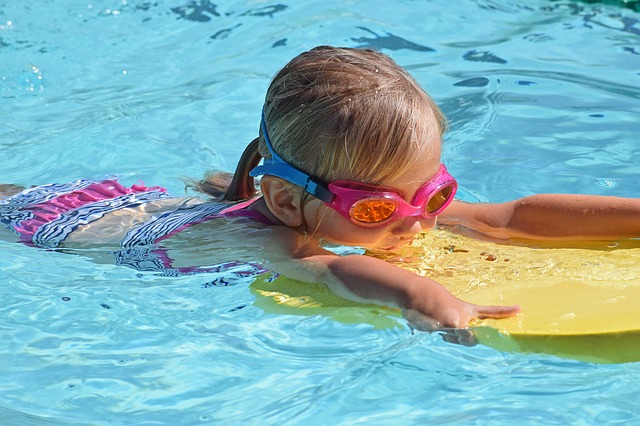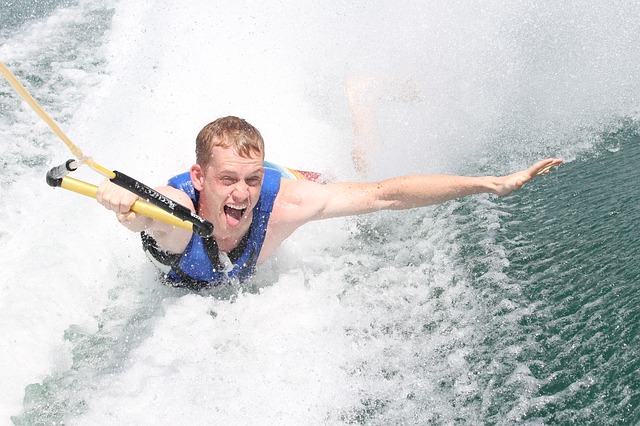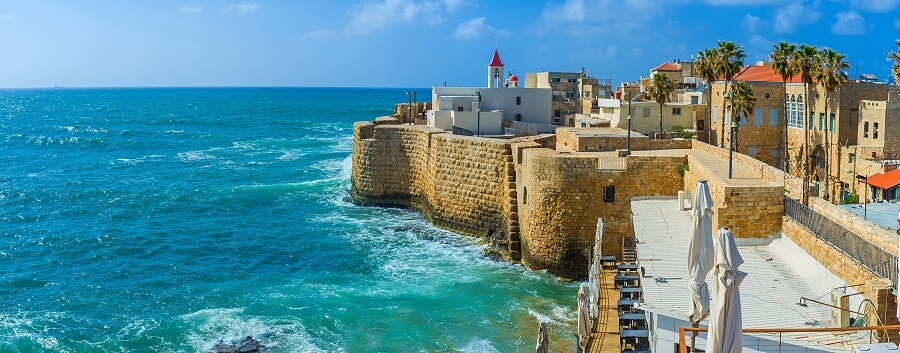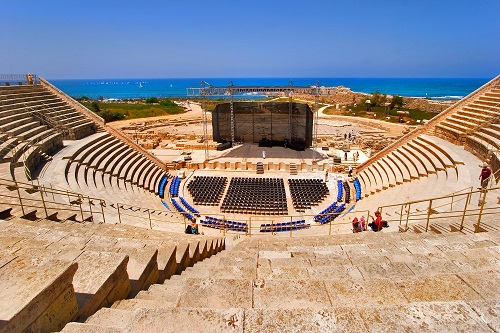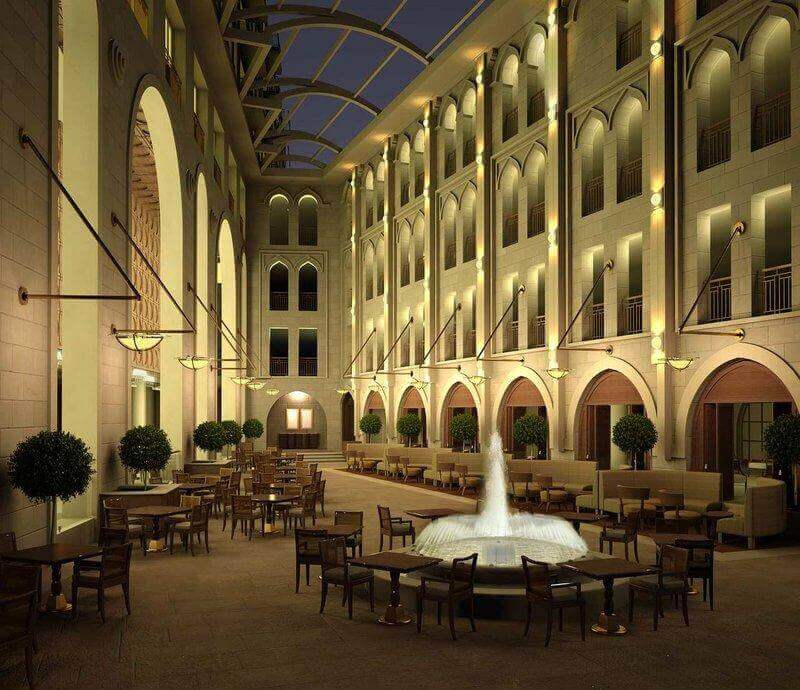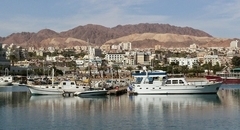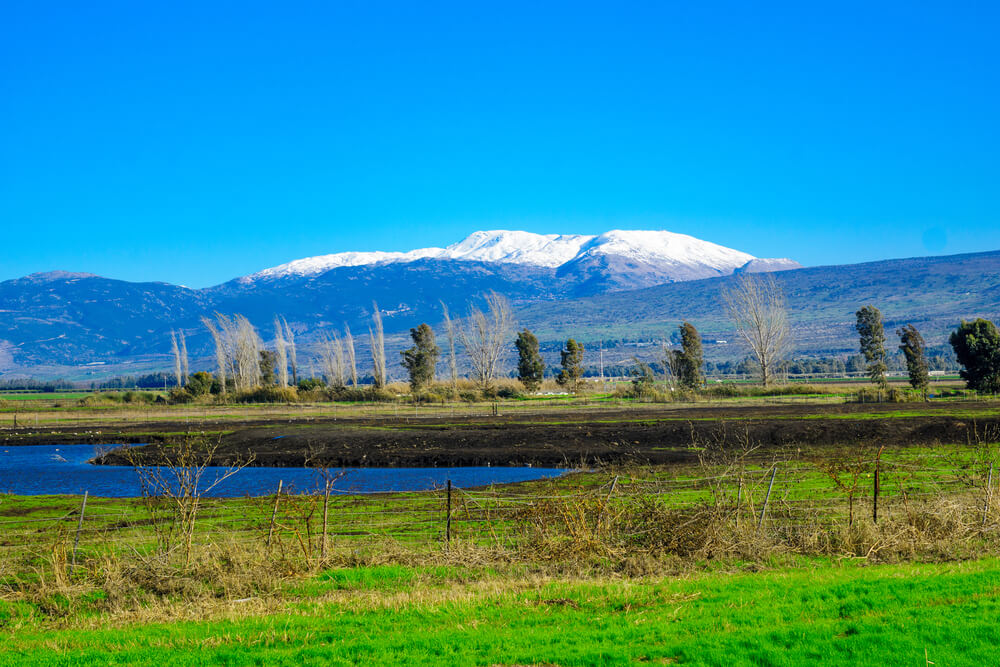10 Best Jerusalem Hotels
The following list includes the best hotels in Jerusalem; as can be expected most of the hotels are 5 star luxury establishments, boutique hotels and historic hotels but there are a couple of less prestigious hotels which offer a unique setting, personal service, great location and an excellent reputation.The American Colony 5*This hotel’s history dates back to the late 19th century when devout Christian Americans Horatio and Anna Spafford moved to Jerusalem to find peace following the tragic death of their four daughters. They, together with fellow Americans opened their hearts and their doors to locals of all creeds and cultures and became known simply as “the Americans.” The couple were joined by fellow Christians from America and Sweden and they purchased the former home of a Turkish Pasha; the palace was to become the American Colony Hotel. When Western travelers arrived in Jerusalem at the turn of the century they would stay with the Americans. The hotel gained a reputation as a neutral oasis in the often turbulent Middle East. It is a place where Jews, Arabs, Swedes, and Americans could come together in peace. Famous past guests include Leon Uris, Bob Dylan, Lawrence of Arabia, Richard Gere, Winston Churchill, Tony Blair, and John le Carre. The hotel continues to be run by descendants of the original owners although it is managed by Gauer Hotels of Switzerland.The American Colony Hotel is in East Jerusalem close to the Damascus Gate of the Old City. Within the hotel complex, there are 86 rooms in three historic buildings surrounded by lush gardens and beautiful courtyards. The hotel facilities include a swimming pool lined with Italian glass tiles; a fitness room overlooking the pool; a sauna; business center; spa and a selection of stores selling exotic goods, antiques, oriental rugs, and religious items plus all the added extras you would expect from a luxury hotel. Guests have the choice of several hotel eateries including outdoor dining and an intimate bar.Mamilla Hotel 5*Mamilla’s location is about as good as it gets just a few steps from the Old City and overlooking the luxury shopping avenue of the same name. Mamilla was a neighborhood just outside the city walls, the armistice line between Israel and Jordan ran through the neighborhood and it suffered from shelling. Following Israeli independence, the government approved a plan for urban renewal and the area was restored and rebuilt. This included the construction of the open-air pedestrian Mamilla Mall and the Mamilla Hotel. It is a relatively new hotel and offers superior, sophisticated and exclusive hospitality. The hotel’s contemporary design was created by Piero Lissoni. The hotel has an indoor pool and guests have free access to the David Citadel Hotel outdoor pool just across the street. Other facilities include the hotel gym, Akasha Wellbeing Center, spa, health bar and several eateries including the rooftop restaurant with brilliant views across the Old City. Guests have access to the hotel lounge and to the business center. Famed for their personal touch, each guest is assigned a personal host. The 194 hotel rooms include studios and suites.The King David Hotel 5*Perhaps the city’s most famous hotel, King David has played a role in Israel’s history. Construction was financed by Ezra Mosseri (Egyptian Jew and director of the National Bank of Egypt) together with other wealthy Cairo Jews. The hotel opened in 1931 and from the start was the go-to hotel for royalty and celebrities. Over the years the hotel became home to three heads of state fleeing their countries (King Alfonso XIII of Spain in 1931; King George II of Greece in 1942 and Emperor Haile Selassie of Ethiopia in 1936). The southern wing was used as the British administrative and military headquarters during the British Mandate. The hotel was designed by Emile Vogt in the European style. The structure has Eastern elements like domes, arches, and various local stones. G.G. Hufschmid created the décor in the public areas using Middle Eastern cultures as his inspiration. The hotel has been the venue for state occasions, official banquets, and meetings between world leaders and famous personalities including Richard Nixon, Jimmy Carter, Bill Clinton, Obama, Winston Churchill, Thatcher, Blair, Elizabeth Taylor, and Richard Gere.Today King David is owned by Dan Hotels. The hotel has a unique pink sandstone exterior, exotic and romantic public spaces, and King David is located within walking distance of the Old City. The hotel has extensive lawns, gardens, and a pool. There are tennis courts, kids' and adult’s pools, a children’s playground, a business center, a fitness center, and a spa.The hotel has an elegant fine dining restaurant, a garden restaurant, Oriental Bar, and a poolside snack bar. The six-storey hotel has 233 rooms and suites, many overlooking the Old City and with a balcony. The hotel offers several rooms for families.The David Citadel Hotel 5*This hotel’s motto is “uncompromised luxury and elegance.” The hotel is located in Western Jerusalem facing the citadel of David and the Old City and is a relatively new and contemporary addition to Jerusalem’s luxury hotels. The design is a horseshoe shape reminiscent of a European opera house with the rooms facing the “stage” in this case the Old City. There are terraces leading to a glass-domed lobby, dining area, pool, and terraced hanging gardens. Thanks to the hotel structure “descending” towards the Old City each suite has a terrace with brilliant views. They offer amenities that include a spa, health club, executive floors, executive lounge, business center, shopping arcade, sauna, and medical center on the premises. There is a large outdoor pool that is heated in winter and a toddlers’ pool. The hotel features five eating options including the fine dining restaurant, Aqua Le Divellec, a terrace eatery covered by a glass ceiling, sushi bar, and poolside grill. In each of the oversized 384 rooms and suites, you’ll find balconies facing the Old City, cotton bed linen and oversized towels. The hotel has also thought about family guests and there is a new 100m² children’s play center.Inbal Jerusalem Hotel 5*This is one of the most luxurious hotels in the city, it is located overlooking the Jerusalem Liberty Bell Park and the Old City in the Talbiya neighborhood. Inbal was originally known as the Laromme and it was designed by Ya’acov Rechter. The hotel has a sophisticated and elegant design with 283 rooms and prides itself on a friendly, personal, and family ethos. The hotel has accommodated Bill Clinton, Mikhail Gorbachev, Henry Kissinger, Al Gore, and other famed personalities. The décor and furnishing is elegant and modern. The amenities include free WiFi, a newly renovated health spa, fitness center, heated pool, executive lounge, business center, restaurants, spa, and saunas. There are conference facilities, a shopping arcade, mobile phone rental, and a full-service beauty salon. There is fresh fruit and a tea and coffee set in every room.The hotel provides activities and amenities for families with kids specifically during the Israeli school holidays. There are children’s and teen game rooms open throughout the year and staff entertains young ones with workshops, arts, and crafts. There is a kid’s menu in the restaurant, foods for kids with allergies, and a toddler’s pool. The hotel has connecting rooms and family units.Waldorf Astoria Hotel Jerusalem 5*The exterior of this magnificent hotel, just minutes from the Old City is what remains of the 1930s historic Palace Hotel. But behind the historic façade lies a contemporary and ultra-luxury hotel that opened its doors in 2014. The hotel boasts the largest reception hall in Jerusalem. The luxury can be felt from the moment you enter, the lobby drips with chandeliers and the walls are laden with quality artwork. Hanging above the staircase is an art installation featuring 48 glass doves. The design concept has put aside modesty and minimalism and instead spoils guests with opulent surroundings. The overall design theme is the elegance of the late 1920s. There are 226 rooms and suites in a triangular-shaped building on the corner where King David Street meets Agron Street with the four-storey historic wing on one side and the newer nine-storey wing on the other.Visitors checking in to the hotel are given a tablet that they can use throughout their stay to check emails, control room functionality, and call room service. The hotel is still being developed with new facilities being added all the time including the lap pool and spa which should be ready in 2016. Between them is an elegant inner courtyard covered by a glass ceiling. The hotel facilities include pools, two restaurants, a bar, WiFi, and a business center. The rooms are large with the smallest room measuring 40m². There is luxury linen, a Serta mattress, custom furnishing and crystal chandeliers in the rooms as well as heated Italian marble bathroom floors, a sit-down shower stall and bath plus a private wet bar and espresso machine. Some of the rooms have balconies but this hotel is known more for its luxurious décor than the views. Families are taken care of with under 18s staying free in their parent’s room and a children’s menu in the restaurant.Alegra Hotel 4*m the 1930s which has been given a modern rooftop sundeck and observation point. The views from this elevated location are breathtaking, overlooking the forested village of Ein Kerem. The hotel is perfectly located close to the Old City. The hotel has 13 rooms and suites each named after a pair of famous lovers. In the rooms, you will find beds made with Egyptian cotton sheets, espresso machines, champagne, WiFi, and a sound system. The public areas include a courtyard, garden, splash pools, waterfalls, fish ponds. This ultra-luxurious boutique hotel fuses old and new seamlessly. Each room has a living, working and resting area, and some of the rooms have large terraces. The largest suites are 39m² and feature the original interiors of the historic home. Hotel amenities include a spa, sauna, meeting facilities, bicycle rental, docking stations in the rooms, complimentary mini-bar, and much more. There is a resident chef, Amir Na’or, who can take you on a gourmet tour of Jerusalem at request. Bread is baked freshly in the morning and breakfast is made-to-order.Arthur Hotel 4*This is an unexpected addition to the best hotel list; it opened in 2013 in the heart of downtown Jerusalem on the Ben Yehudah pedestrian promenade. Unlike other top hotels which tend to overlook the Old City and rates are significantly lower than other luxury hotels. The hotel is consistently voted one of the best in the city specifically for romantic getaways and families. Their motto is “ old world charm and contemporary hospitality.” The hotel has recreated the ethos of the British Mandate era; the décor includes period photos, Turkish carpets, antique furniture (some commissioned and some picked up in local markets), Armenian ceramics, and leather chairs. Despite the theme the building itself is new and has only 54 rooms; the structure has no room for facilities like a pool or gym but they make up for it in personal service, quality linen, and towels plus design and style. Attention has been paid to every detail. The size of the building also means that there are no bathtubs, only showers. There is WiFi, a games room, and a free bicycle rental service. For food, guests will find a sumptuous breakfast and a complimentary late afternoon snack (including wine) but no dinner service.Eyal Hotel 3*This hotel is located 100 meters from Zion Square in central Jerusalem but still within walking distance from the Old City. The Eyal prides itself on personal service, comfortable, clean, and sleek surroundings. The 68 room hotel has recently been renovated with the addition of modern amenities, finishing touches to the design, and advanced technology where applicable. The hotel has sublevel guest parking (essential in central Jerusalem), an events hall, solarium, eco-wall dripping with lush plants, and views of the city. The hotel strives to be eco-friendly and recycles the heat generated by the various systems in the hotel. Other eco measures include the use of air-sourced heat pump technology, thermal heating, double pained glass windows, and furniture made from natural and recycled materials. The hotel chef prepares breakfast and dinner which is served in the hotel’s newly renovated dining hall. There is a large deck on the sixth floor. The majority of the rooms have a balcony, all rooms have USB outlets, tea and coffee set, Aminach mattresses, free WiFi, and a modern bathroom. There are suites with a Jacuzzi and family rooms with separate living areas.This may not be the fanciest hotel on this list but if you are on a budget then you couldn’t get much better. Eyal Hotel has consistently received good reviews online and was awarded a certificate of excellence in 2015 on Trip Advisor.Gloria Hotel 2*If your dream is to sleep within the Old City walls then the Gloria Hotel can oblige. It is the only tourist-class hotel within the Old City walls, located in the Christian Quarter inside the Jaffa Gate in the heart of historic Jerusalem. The hotel building has undergone renovations and refurbishing but began welcoming guests in the 1950s. The hotel combines modern amenities (air conditioning, en-suite bathrooms, elevators, WiFi, etc) with the historic surroundings. The family-run hotel offers impeccable service and attention to detail. The hotel walls in the public areas are exposed Jerusalem stone, some of the areas are under vaulted ceilings. The rooms have a simple but modern feel and all 104 rooms enjoy the quiet atmosphere of the Latin Patriarchate Street where traffic is limited. Many of the rooms have views across the rooftops of the Old City. The hotel serves a set menu of buffet meals for dinner, a sumptuous breakfast and there is an intimate bar.
